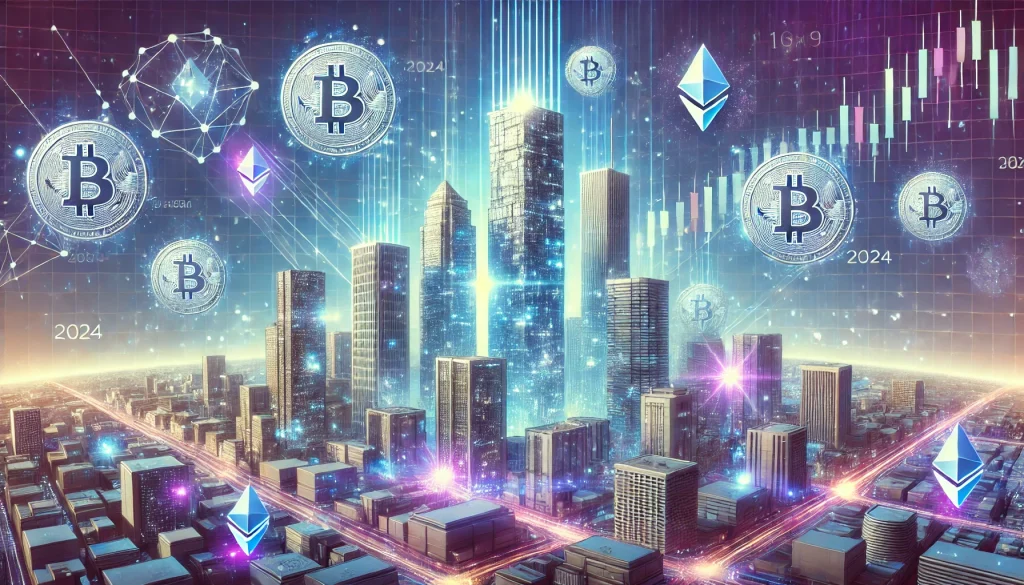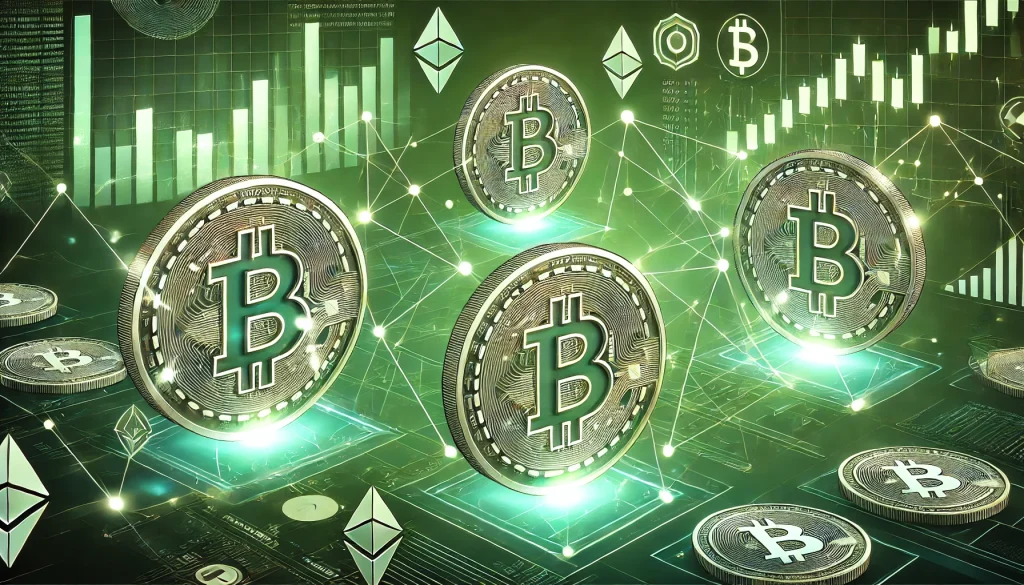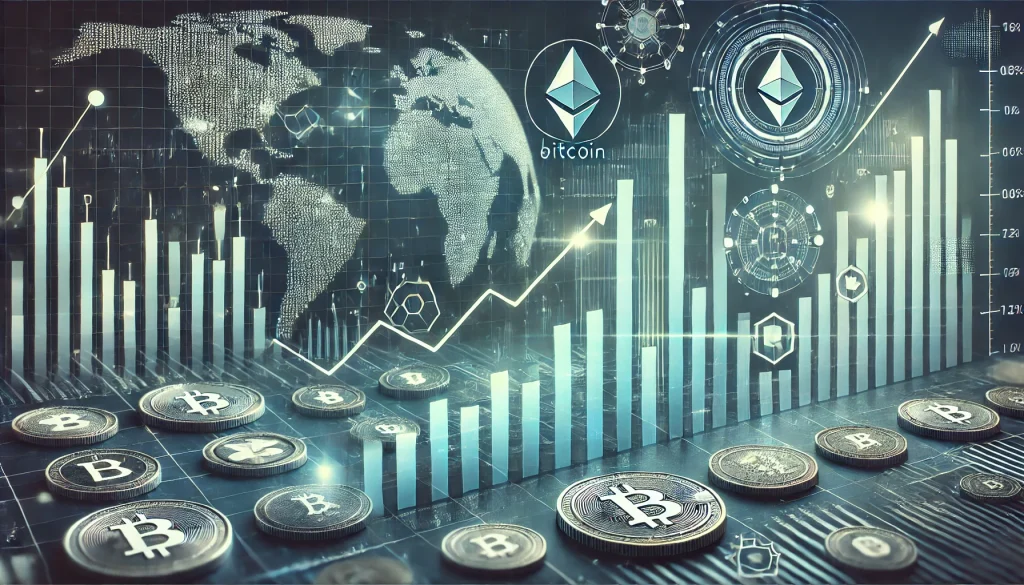Introduction
The 2024 Tokenization Market Review highlights a rapidly evolving field that will revolutionize the way assets are managed and traded. Tokenization, the process of converting real-world assets into digital tokens on the blockchain, is gaining significant momentum. This review explores why tokenization is playing a key role in the financial industry and provides insights into its impact and potential for the future. Dive into the Tokenization Market Review to learn about the benefits, challenges, and innovations driving this disruptive technology.

Overview
In this tokenization market review, we explore the key characteristics and developments that will shape the tokenization market in 2024. Tokenization is revolutionizing asset management by enabling fractional ownership, increasing liquidity, and improving transparency through blockchain technology. The market is set to grow significantly with a variety of platforms offering solutions that cater to both retail and institutional investors. From real estate to art, tokenization is expanding the range of assets that can be traded digitally, making it easier for investors to diversify their portfolios and participate in global markets. Advances in security, user experience, and regulatory frameworks make 2024 an exciting time to explore this revolutionary financial technology.
Pros and cons
Pros

- Increased liquidity: Tokenization allows assets to be split into smaller, cheaper units, increasing market liquidity. This is especially useful for traditionally illiquid assets like real estate.
- Transparency and security: Blockchain technology ensures the safety and transparency of transactions, reducing the risk of fraud.
- Accessibility: Tokenization opens up investment opportunities to more people, making it easier for small investors to participate in high-value markets.
Cons

- Regulatory uncertainty: The legal and regulatory landscape surrounding tokenization is still evolving, which can lead to uncertainty and potential problems.
- Technical complexity: The underlying technology can be complex and require significant investment in infrastructure and expertise.
- Market volatility: As a relatively new market, tokenization can be subject to volatility, which can scare off risk-averse investors.
Deep dive analytics

Performance and usability
Tokenization platforms in 2024 are designed to improve the performance and usability of financial transactions. Platforms like those reviewed by Gartner offer robust features that cater to both novice and experienced investors. The ability to tokenize a wide range of assets, from real estate to art, is a key performance indicator that will drive adoption.
Design
While most tokenization platforms have user-friendly interfaces, there is still a learning curve, especially for those unfamiliar with blockchain technology. Companies like Investax.io are making strides in simplifying the process by providing intuitive dashboards and comprehensive guides to help users navigate the complexities of tokenization.
Features
Functionality is where tokenization really shines: the process allows assets to be easily fractionalized, allowing investors to own a piece of a high-priced asset without having to buy it outright. This is a major step forward for financial inclusion.
Security
Security remains a top priority because blockchain technology provides a secure transaction environment, but as TheStreet.com highlights, the industry must continue to innovate to stay ahead of potential security threats, especially as the market grows.
Comparison to traditional markets
Compared to traditional financial markets, tokenization offers a more flexible and accessible approach to asset management. Traditional markets often require significant capital and are geographically restricted. Tokenization, on the other hand, enables global participation and lowers barriers to entry. However, traditional markets are still considered more stable and have well-established regulatory frameworks, providing a level of security that tokenization has yet to fully achieve.
| Features | Tokenization | Traditional finance |
|---|---|---|
| Liquidity | High | Normal |
| Accessibility | Global | Often the local |
| Regulatory clarity | Evolving | Well established |
Conclusion
In this Tokenization Market Review, we make it clear that 2024 is a pivotal year for the adoption and growth of tokenization. By democratizing access to assets, increasing liquidity, and improving transparency, tokenization can be a powerful tool in the financial industry. However, navigating the challenges of regulatory uncertainty and market volatility is essential. Overall, tokenization is a promising innovation that offers new opportunities for investors and businesses alike. As this market continues to evolve, staying informed and strategically engaged in tokenization can yield significant benefits.
Evaluation
4/5 – Tokenization is an innovative technology with great potential, but it requires careful consideration of the risks involved.
FAQ
What is tokenization?
Tokenization is the process of converting real-world assets into digital tokens on a blockchain.
Why is tokenization important?
Tokenization opens up new investment opportunities by making assets more liquid, accessible, and secure.
What are the risks associated with tokenization?
Regulatory uncertainty, market volatility, and technical complexity are the main risks.
See also
- Investax.io. (2024). Tokenization market Q2 2024 snapshot. https://www.investax.io/blog/tokenization-market-q2-2024-snapshot
- TheStreet. (2024). Why tokenization will dominate the financial sector in 2024. https://www.thestreet.com/crypto/markets/why-tokenization-will-dominate-the-financial-sector-in-2024
- Umwtf. (2024). Real-world asset tokenization in 2024: Transforming investment. LinkedIn. Retrieved from https://www.linkedin.com/pulse/real-world-asset-tokenization-2024-transforming-investment-umwtf/
- Gartner. (2024). Tokenization platform reviews. https://www.gartner.com/reviews/market/tokenization-platform
- Tom, U. (2024). 10 pros and cons of tokenizing real-world assets. LinkedIn. Retrieved from https://www.linkedin.com/pulse/10-pros-cons-tokenizing-real-world-assets-ubong-tom-110mf/
